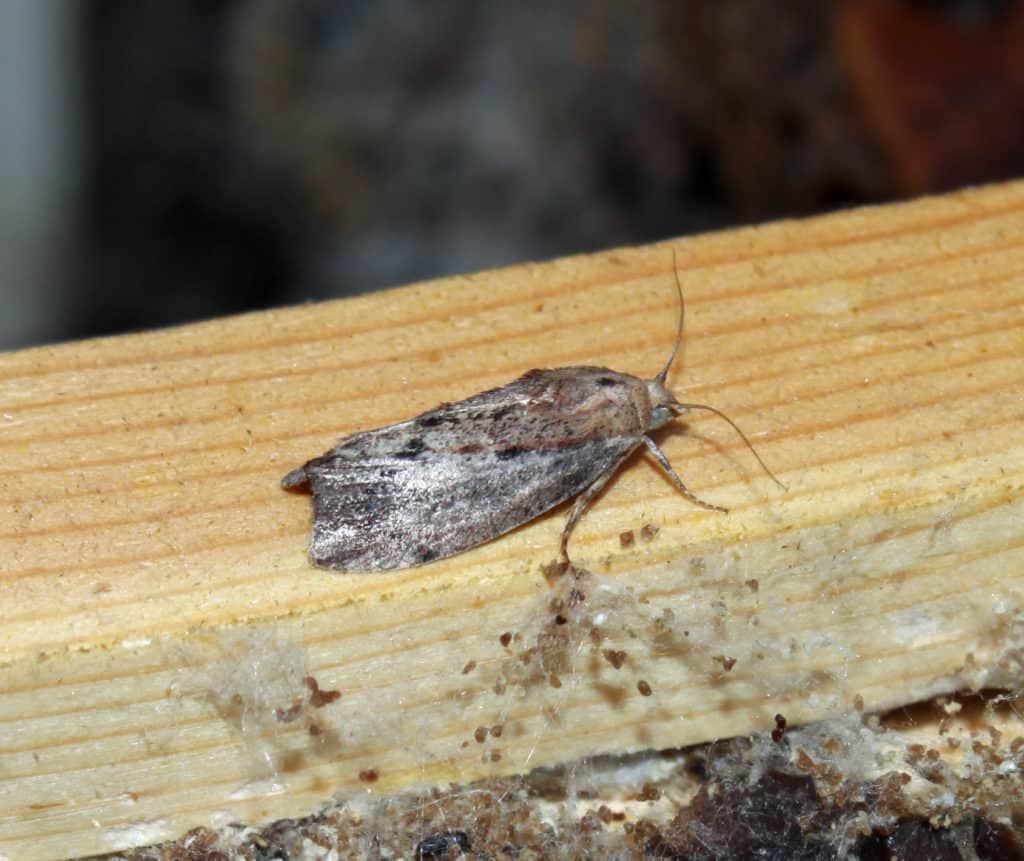
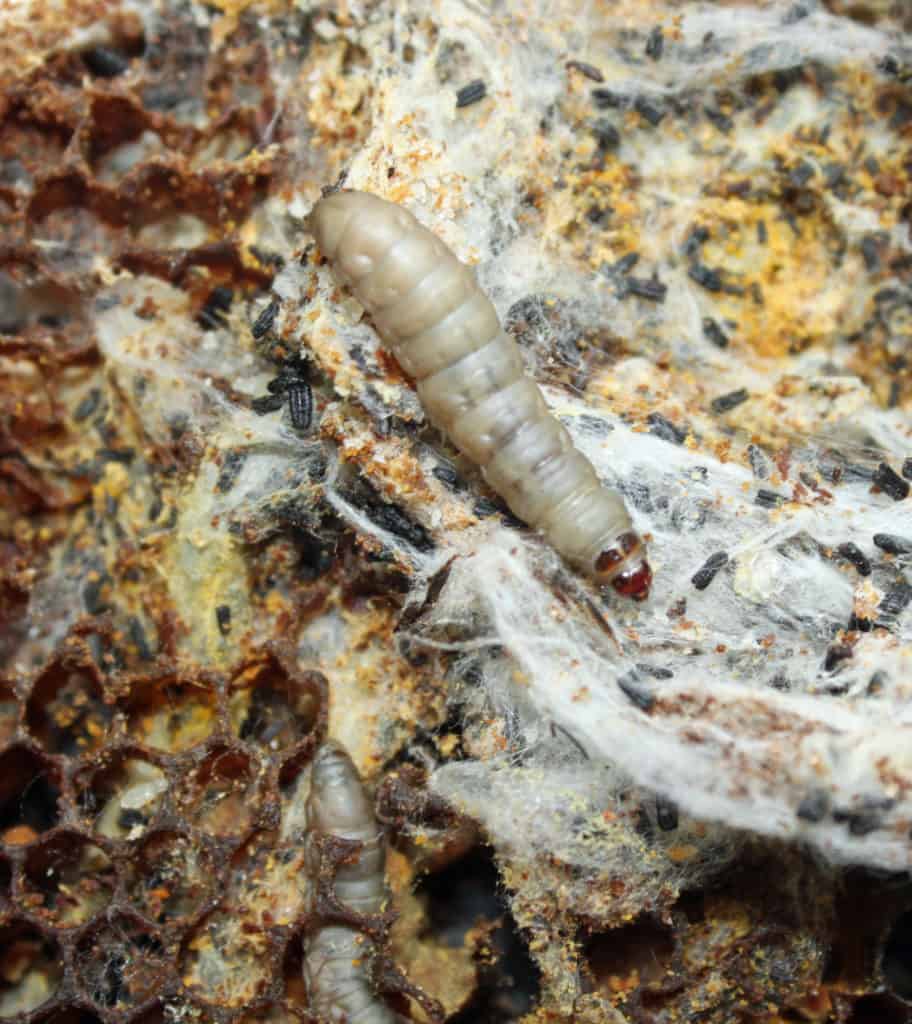
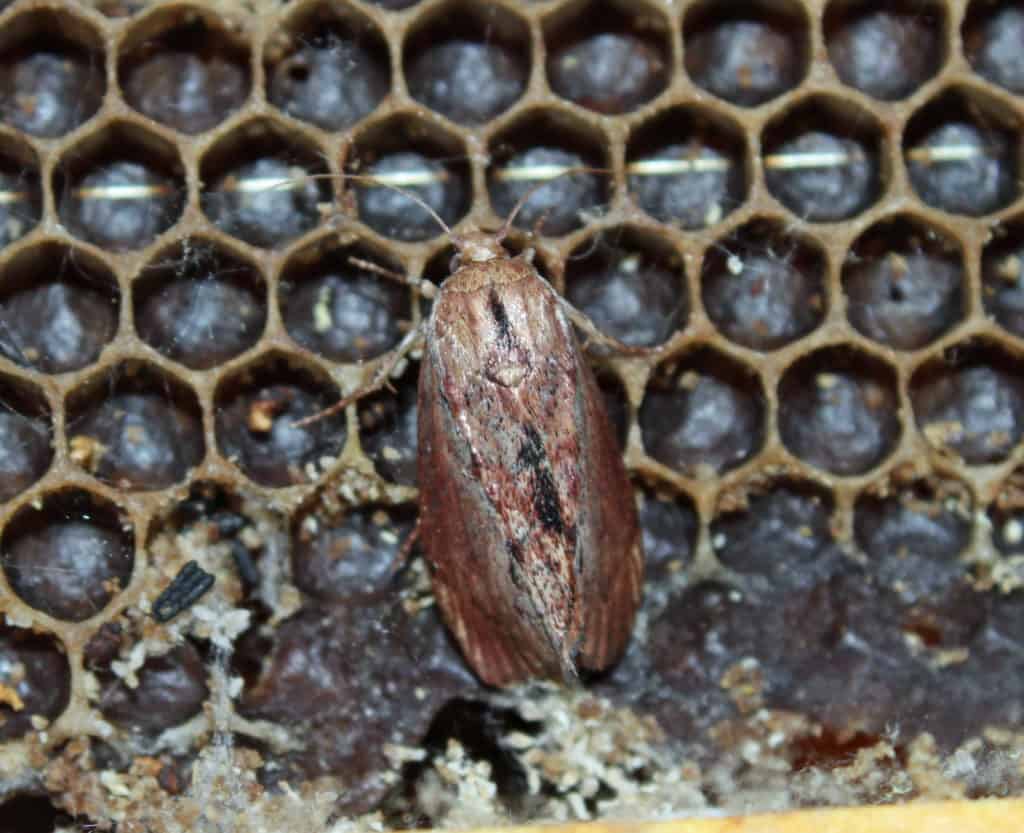
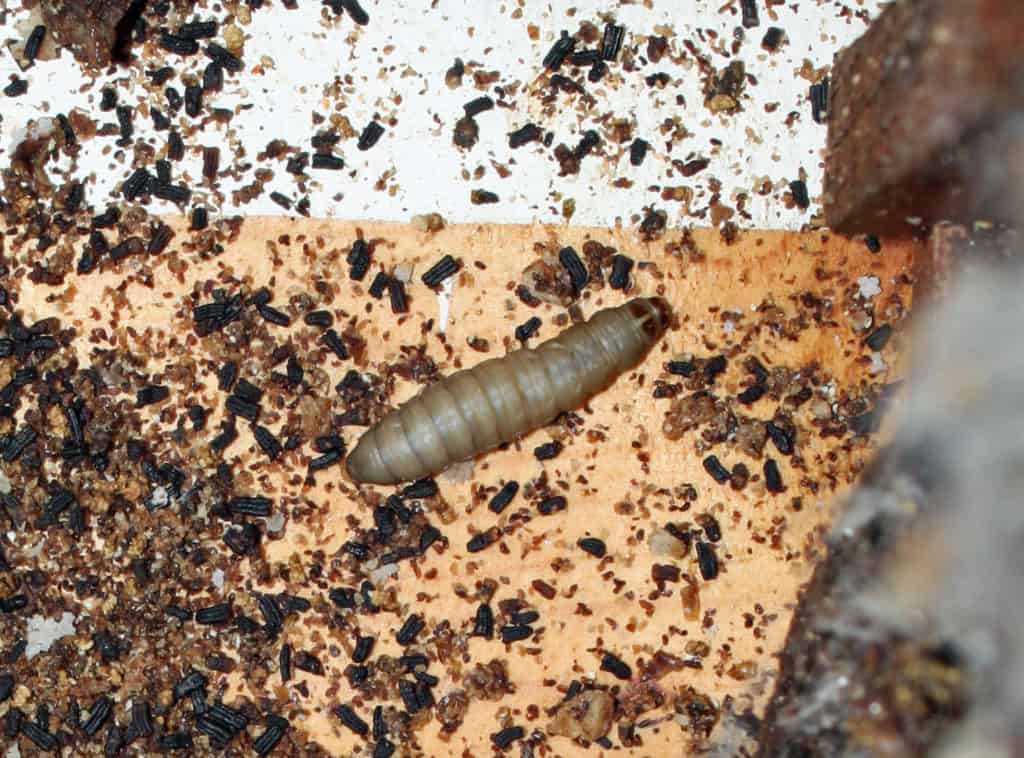
I would like to talk about a pest previously mentioned in these blogs called the “Wax Moth.” This pest can be a problem all year round especially with stored equipment. Here are some ways to store comb, if you have any other ways to store your equipment please post in the comments. You can use PDB crystals (Dichlorobenzene) or moth balls as fumigants, be sure to air out a day or two before using them. A good friend of mine Tracy Alsedek from “Main Line Honey” keeps his equipment in a room with the light on 24/7 365 and he has no wax moth issues. Beekeepers in cold climates keep their equipment outside and some store theirs in freezers. The wax moth adult doesn’t damage the drawn comb but the larvae damage the brood wax. The larvae or caterpillar feed on beeswax, stored pollen, honey and sometimes brood. They can be seen easily by the silk lined tunnels they leave in brood wax. You can see examples of this in the image below, larvae are circled. Above are images of larvae and adult.
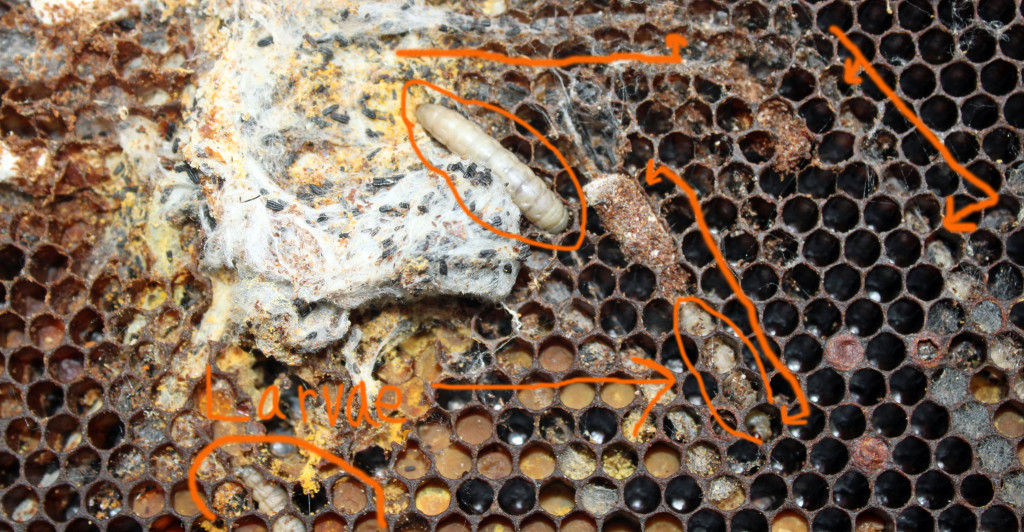
Wax moth causes millions of dollars in damage to the beekeeping industry each year. There are images of the damage these wax moths cause above. You can also see above wax moth cocoons before emergence. Before making the cocoon, larvae bore scallops into the frames and woodwork. These moths are also commercially reared, as they are easy to breed, for feeding terrarium pets and also for fisherman. Fisherman use wax worms for catching pan fish, there is an image of a pan fish below. There is also a picture of some wax moth cocoons on the tops of frames.

